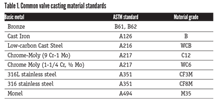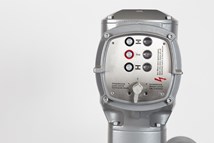How Does the Gig Economy Affect Your Search for Good Employees?
In November, the latest 2018 skills gap study from Deloitte and The Manufacturing Institute projected that 2.4 million skilled jobs will go unfilled in manufacturing between 2018 and 2028.
Charlie Wilgus is the founder and general manager of Lucas Group’s Manufacturing & Supply Chain Executive Search Division and VALVE magazine spoke to him about this phenomenon and how to utilize it to fill not just manufacturing jobs but also jobs in the oil and gas, refining and petrochemical industries.
VM: What does the term Gig Economy mean as far as manufacturing is concerned?
CW: Gig economy is another of those catch phrases like lean manufacturing, six sigma and block chain. The gig economy relates not just to manufacturing but to the whole economy where there are temporary positions. The gig economy, though, takes the notion of filling jobs with temporary workers to a bigger level.
It is no longer the case that someone stays a full-time employee at one company years and years. In the gig economy, individuals with a certain skillset come in, do their job and get the project completed. Then they move on to another company. They do not stay and grow with one company.
That’s not to say that there is not a huge need for full time, loyal employees who do their job really well. There is a great deal of benefit to that, but in this economy, companies need different individuals who have different skills throughout different periods of tie. That doesn’t exist in one person.
VM: When did this become a phenomenon in the manufacturing sector?
CW: This is not really coming from the manufacturing sector, but it is affecting the manufacturing sector. There has been a short-term, project-based need for workers for many years, especially in information technology.
What is driving this now is that the economy is doing so well, and unemployment is so low, companies are not able to find long-term employees. But they still need to get somebody quickly, and these project-based workers are increasing by the thousands.
As a result, many more traditional companies, including manufacturers, are thinking maybe they can get away from the old model and into this new model.
VM: What came first though, the chicken or the egg? Was it employers not keeping people on, such as in car manufacturing, or is it that the workforce is looking for something different?
CW: I like the chicken and egg analogy. I think both were happening at the same time, but I believe this situation now is being dictated by the candidates, the workforce. Employers are reacting to the current employment market.
As recruiters, we’re trying to find candidates for long term positions, higher level and management, and these companies are desperate for workers. It’s 3.4% unemployment. But many of the best long-term candidates are not necessarily willing to move right now. So companies must be flexible and willing to take contract or gig employees.
At the same time, millennials are realizing that they are in the drivers’ seat. They can dictate terms and tenure while learning from different cultures in various companies with varied product lines. Manufacturing is oftentimes considered “old school” in that people stay for their whole career and work their way up from the factory floor to management. That is still the case for some people, but now candidates want to acquire immediate value, feel supported, bring support with them and they want to have many experiences.
The good news is that, for those types of candidates who want long term, there is a high demand. Manufacturing companies often prefer to see people through a development stage. They are producing products, getting things leaner, faster and reducing waste. You can’t just come in and make things happen; it is a long-term process. Everybody plays a role in the long term, so they don’t necessarily want people coming and going.
However, manufacturers are realizing we may not find enough talent like that.
VM: In traditional manufacturing, job hopping was considered a negative attribute. Is that still the case?
CW: The perfect candidate is, in my opinion, someone who is willing to do either or both long term or short term. Diversification is good, but so is long-term commitment.
VM: Are you also seeing this in process industries like refining and the petrochemical industry?
CW: Absolutely. In fact, that is where we saw this trend begin and take hold. Because there are so any specialty skills in this field, people would take those skills from company to company. Whether it was drilling expertise or something else, there are any manner of things that are done as short-term projects within a bigger project.
They didn’t call it “gig economy” but they were in such high demand, that the pros would do whatever they could to grab the people to be experts. They had to be creative earlier.
VM: How or where does the Industrial Internet of things fit into this phenomenon?
CW: That is a great question. A lot of that is more around the technology sector and information technology. Where manufacturing meets that is with AI (artificial intelligence) and robotics. That is the biggest change going on in manufacturing, so people with that expertise are in high demand. And there are few of them.
A suggestion for people going into the workforce now, if you’re looking for a good skillset, learn robotics or AI. This is only going to get more widespread. As you look at the gig economy, I think absolutely you’re going to see a lot of short-term projects/workers that come to a company with that kind of experience that other people don’t have in the company.
VM: How does this affect recruiting, training and retaining personnel on the factory floor?
CW: There are two issues at hand here. One, there is a time crunch. People don’t have the time to get somebody trained quickly, or they may not have the training to give. If they did, they would hire a fulltime employee. With contract personnel, you’re paying for somebody to have immediate impact on the business.
But when you’re looking to hire a leader, you want that person to drive the culture for a long period of time, so you will want long-term. But temporary personnel are for a specific purpose.
VM: What is the effect on things like lean manufacturing when personnel are moving around a lot?
CW: Lean is a great concept that companies are still using today. They are still looking for people with lean skills and experience, whether they are on temporary or project or full-time.
Lean is the backbone, the fiber of the company. It means better, quicker, faster, less waste, quality and everything you’re doing is as efficient as possible. Everybody plays a part in that. A contract worker is adding specific value somewhere into that process.
VM: What advice would you offer to valve manufacturers trying to attract personnel in this gig economy?
CW: First, keep an open mind. The way that you used to do it or the way that you should do it doesn’t matter anymore. We’re in a different world: not bad, just different.
Second, don’t get frustrated with the lack of volume of candidates, or quality at your fingertips. This is a candidate-driven market. They are doing well, they’re being supported. If they’re not, they’re going to have 3 to 5 jobs they can take the next day. Get educated on the market.
And finally, to attract millennials, you will have to be competitive. They now make up more than 50% of the workforce. The number one thing they are looking for is a culture where they’re valued, where their work matters, and they can make a difference. Talent needs to know clearly what the job is, where they can make an impact, what the culture and fiber of the company is about.
They must believe in the product and need to know they are valued whether they are short term or long term. Valves are not as sexy as the latest iPhone, but the product adds value to the greater economy/future. Demonstrate that value to the candidates and show that the company itself is not as outdated as they might think.
Kate Kunkel is senior editor of VALVE magazine.
RELATED CONTENT
-
Piping Codes and Valve Standards
As with every intended use for valves, piping carries its own set of standards that valve companies and users need to understand.
-
Misconceptions Regarding Control and Isolation Valve Standards
All on/off isolation valve standards are not created equal and cannot be applied unilaterally to all valves.
-
What’s Your Temperature?
For decades, valve manufacturers have provided the maximum recommended working pressures and temperatures for their products, based on the materials used in the pressure-containing parts.










 Unloading large gate valve.jpg;maxWidth=214)